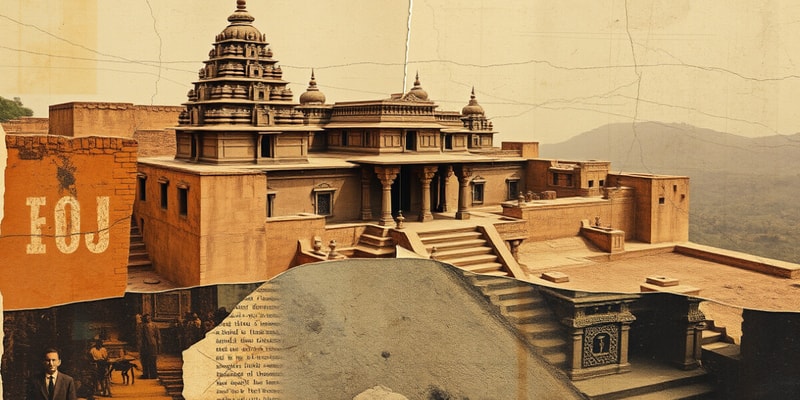Podcast Beta
Questions and Answers
In which century was the Vijayanagara Empire founded?
What event took place in 1565 in relation to the Vijayanagara Empire?
Who was responsible for the first survey map of Hampi?
Which goddess is the name 'Hampi' derived from?
Signup and view all the answers
Which type of sources did historians use to study the Vijayanagara Empire?
Signup and view all the answers
What significant activity began at Hampi in 1836?
Signup and view all the answers
During what time period did the ruins of Hampi fall into ruin?
Signup and view all the answers
Which organization was Colonel Colin Mackenzie associated with?
Signup and view all the answers
Study Notes
Vijayanagara Empire
- Vijayanagara translates to "City of Victory," symbolizing triumph and prosperity.
- Established in the 14th century, the empire expanded from the Krishna River in the north to the southern tip of the Indian subcontinent.
- The year 1565 marked the invasion and sacking of the city, leading to a significant decline.
- By the 17th and 18th centuries, Vijayanagara lay in ruins but remained culturally significant through the memories of its inhabitants.
- Local legend transformed Vijayanagara into Hampi, named after the mother goddess Pampadevi.
- Archaeological discoveries, alongside oral traditions, inscriptions, and monuments, facilitated the rediscovery of the Vijayanagara Empire by scholars.
Discovery of Hampi
- The ruins of Hampi were unearthed in 1800 by Colonel Colin Mackenzie, an engineer and antiquarian.
- Mackenzie, working for the English East India Company, created the first survey map of Hampi, providing crucial details about the site.
- Initial findings were heavily reliant on the tales and memories of priests from the Virupaksha temple and the shrine of Pampadevi.
- Beginning in 1856, the advent of photography allowed for visual documentation of the monuments, aiding scholarly research.
- As early as 1836, epigraphists began compiling inscriptions from various Hampi temples, revealing historical narratives.
- Historians synthesized data from inscriptions, travelers' accounts, and literature in regional languages like Telugu, Kannada, Tamil, and Sanskrit.
Studying That Suits You
Use AI to generate personalized quizzes and flashcards to suit your learning preferences.
Description
Explore the history of the Vijayanagara Empire, established in the 14th century and known as the 'City of Victory.' Discover its rise, the vast territory it covered, and the significant events that led to its eventual decline and ruin. Relive the legacy of Hampi and its importance in the Krishna-Tungabhadra doab region.




